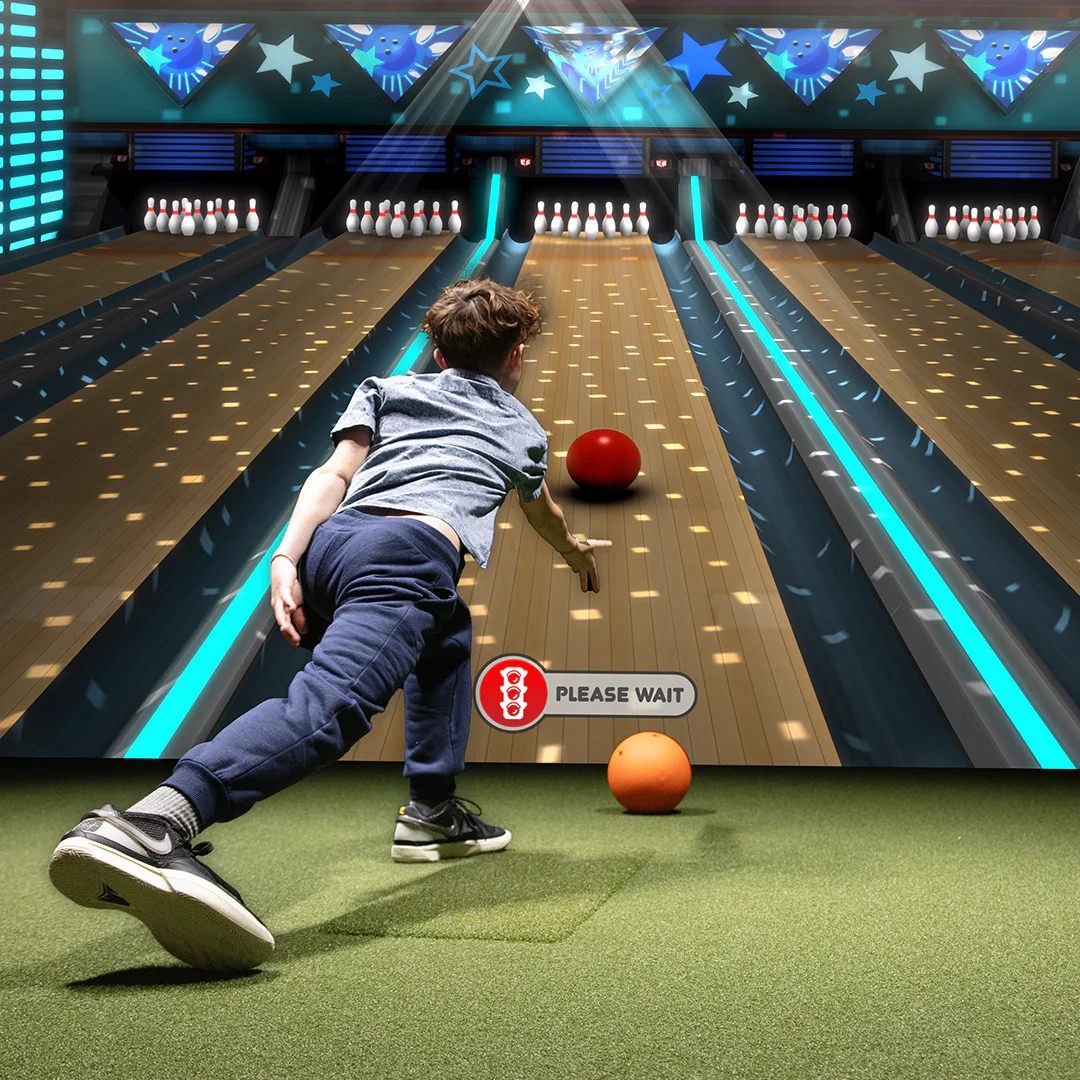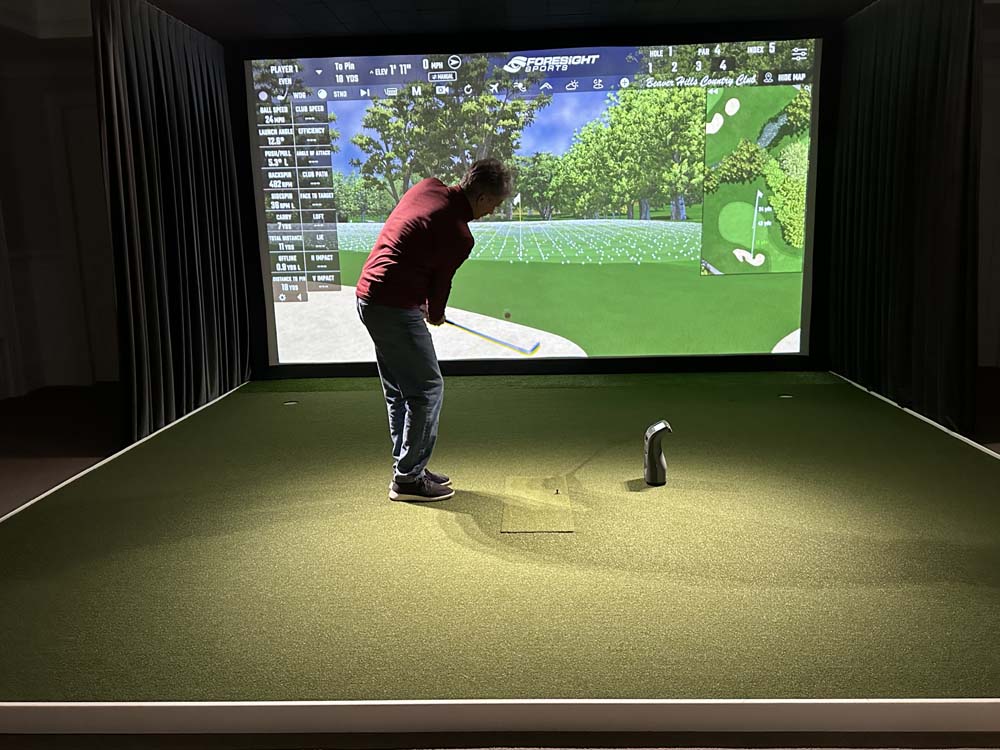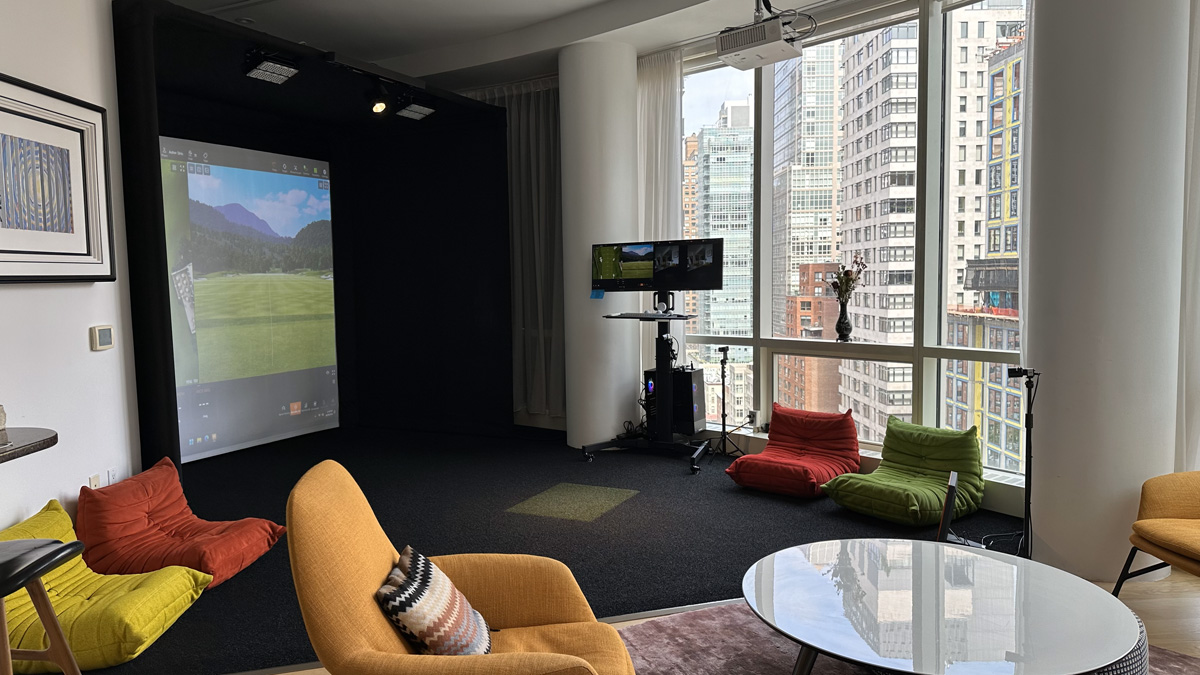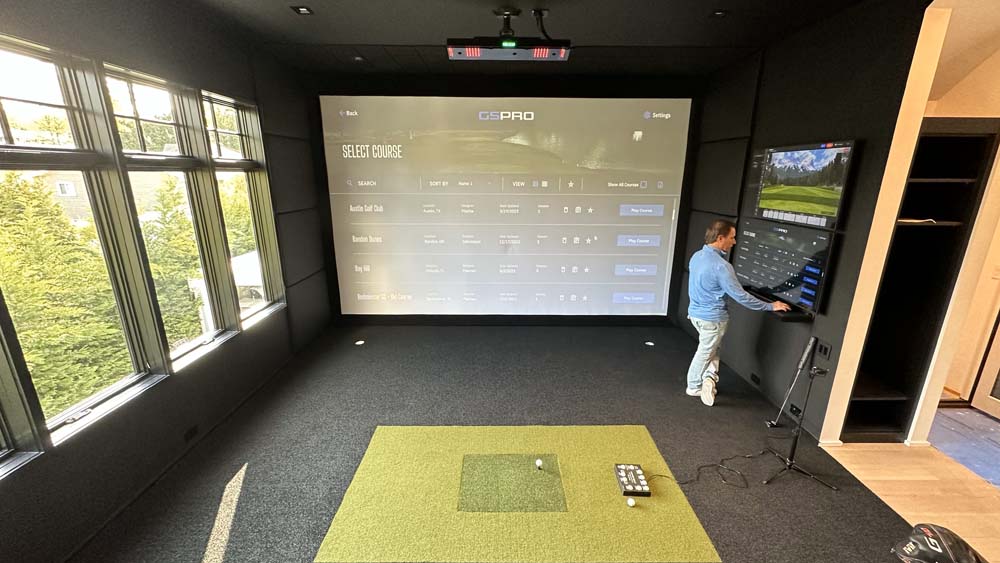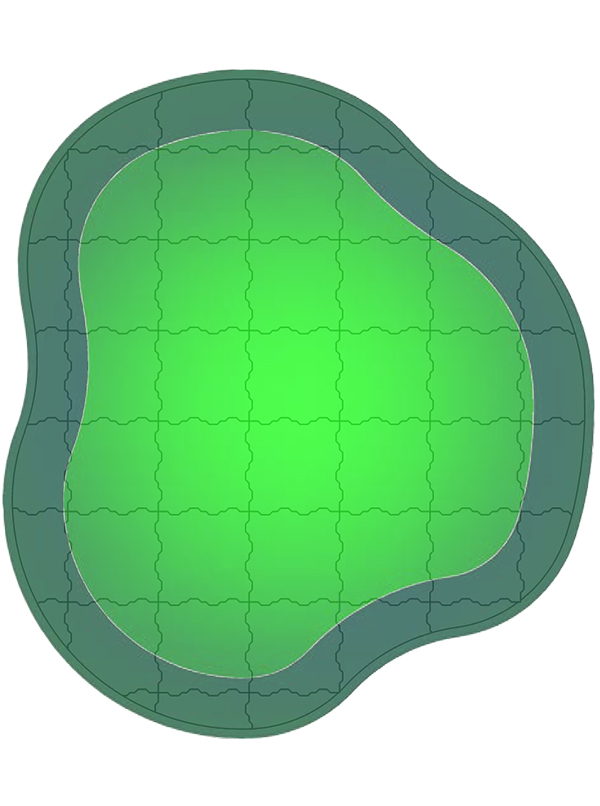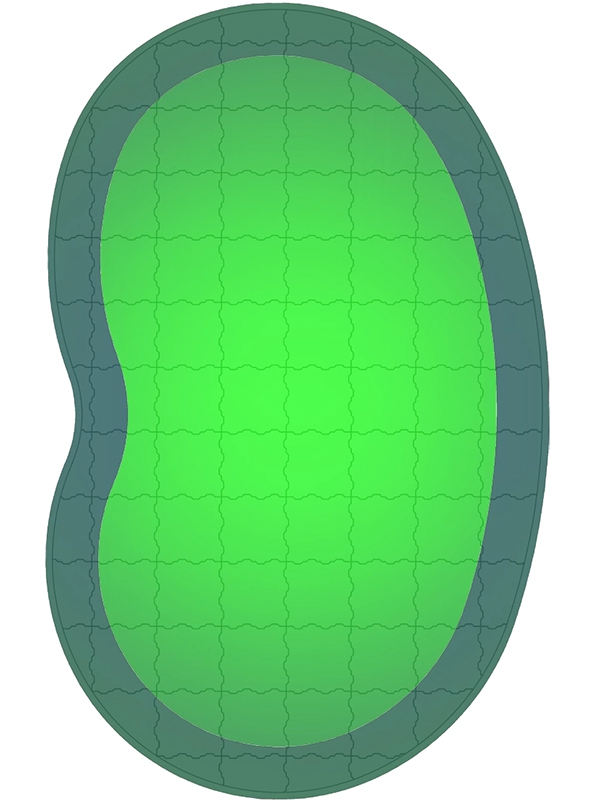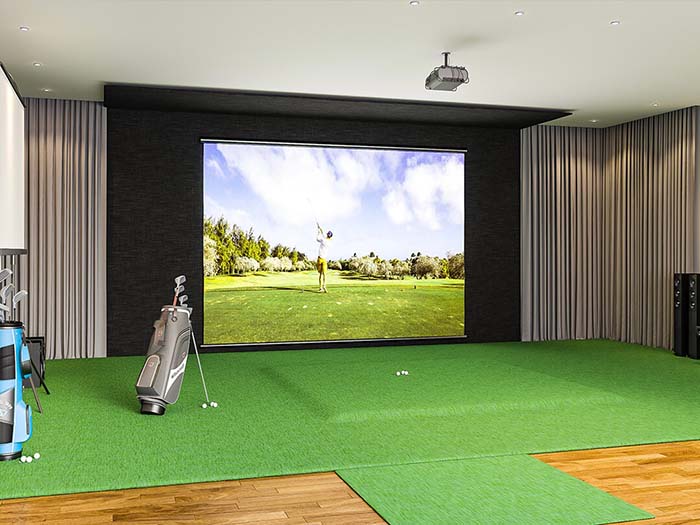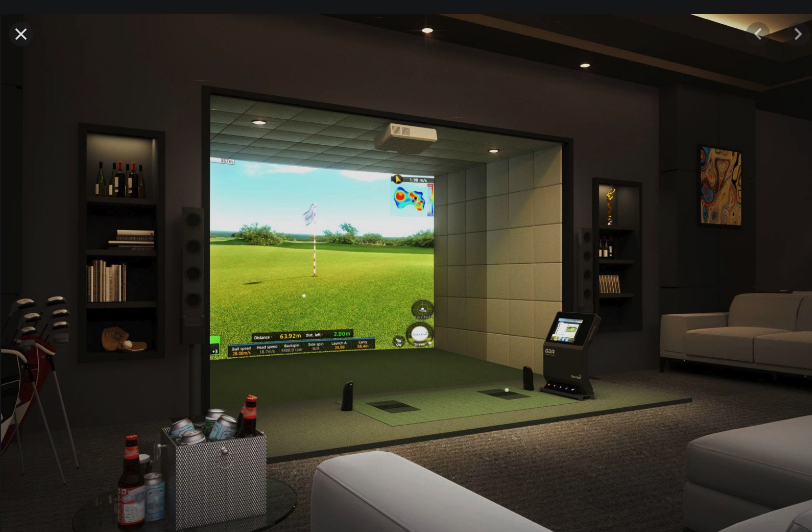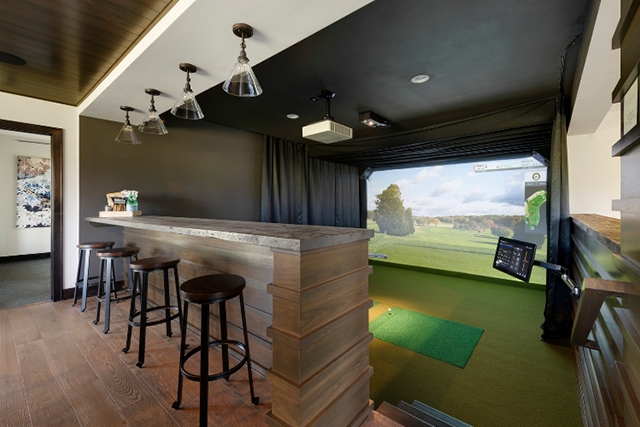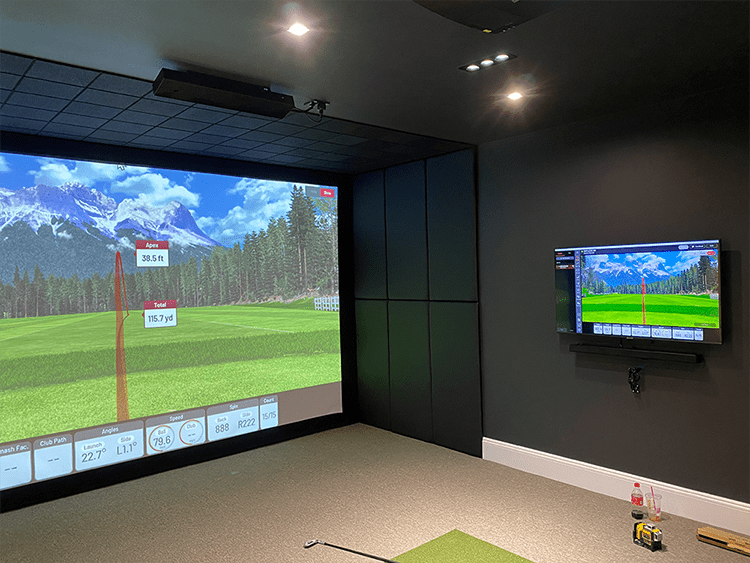Golf Simulator Blog
Free tips & advice for your home golf simulator
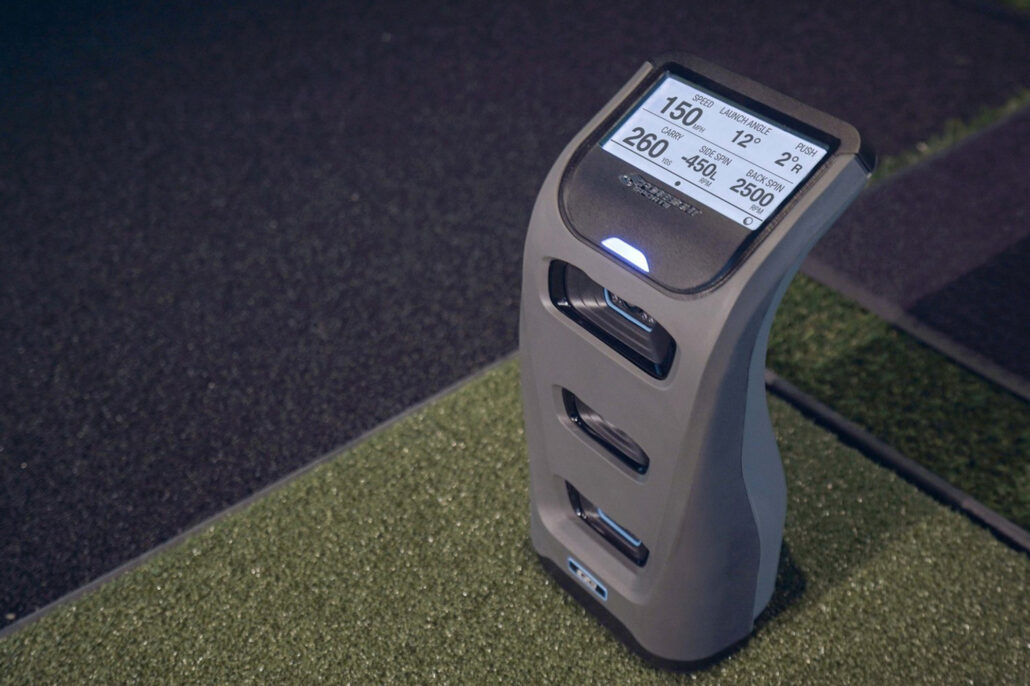
How Golf Simulators Help Improve Your Golf Game
Swing metrics
Launch monitors have revolutionized how golfers analyze and improve their game. After every swing, you have access to a myriad of swing metrics that can help you determine the strong and weak points of your swing. With constant feedback, you’re able to track your progression in a way that golfers never could in the past. There’s always something to work on and improve, and golf simulators make understanding that process much clearer and easier. While there are plenty more metrics, let’s talk about some of the most impactful swing metrics that you can see from your home golf simulator.
Clubhead speed
Clubhead speed is the speed of your club’s head right before impact with the golf ball.
For most new golfers, swinging the club too hard can cause a lot of issues in their swing. However, once you have nailed the fundamentals, you’re able to control your swing much more, allowing you to swing much harder. Generally speaking, the faster your club speed, the further the ball will go.
Typically, the longer the club, the faster you can swing it, so your driver club head speed will be much faster than your shorter irons. According to Trackman, the average PGA Tour player’s driver clubhead speed is 113mph.
Increasing your clubhead speed over time will lead to longer drives and easier approach shots with your irons, so it’s a great way to improve your game once you get to a certain level.
Ball speed
Ball speed measures the velocity of the ball right after impact with the club. Just like clubhead speed, a higher ball speed often translates into a further shot, but there are plenty of other factors that play a part. Ball speed will always be faster than the clubhead speed with an average of 167 mph for PGA Tour driver shots.
Launch angle
Launch angle measures the angle of a ball’s rise after being hit. The biggest factor in launch angles will be the loft of the club that you’re using. A higher lofted club should lead to a higher launch angle compared to drivers and longer irons.
Spin rate
The spin rate measures the RPM (revolutions per minute) of the ball immediately after impact. While spin is very recognizable once the ball hits the green, it also has a huge effect on how the ball travels through the air. Spin impacts the distance, height, and shot shape of your shot, so it is an important metric to keep in mind as you work on your game. Typically, the higher the loft of your club, the more spin it should have.
Carry distance & total distance
Carry distance measures how far the ball travels in the air before hitting the ground. Total distance takes the carry distance and adds a simulation of how the ball would bounce and roll on the ground. In a simulator setting, carry distance is more helpful because the total distance can be easily adjusted by changing settings on your simulator.
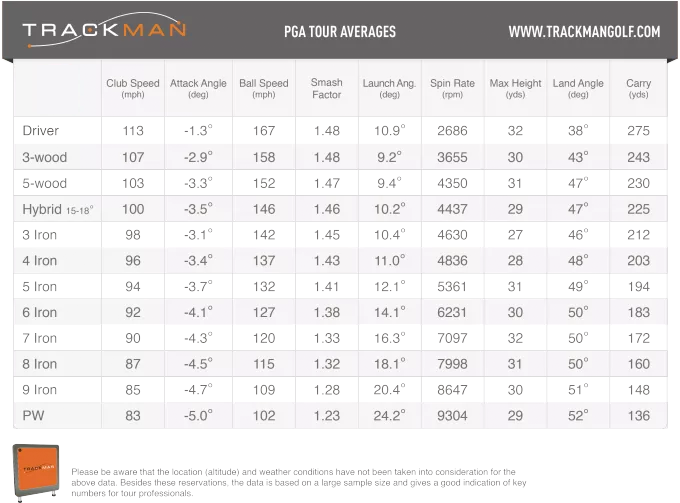
PGA Tour Player average stats, courtesy of Trackman

Video feedback
Our golf simulator installations allow for an optional video feedback component. In addition to the instant access to all your swing metrics, you’ll be able to watch playback of your swing from multiple angles. You’ll be able to see real, visual progress, and it allows you to see some vital aspects of your swing that aren’t so easy to intuit from your launch monitor.
These are just some aspects of your golf game that video feedback can provide:
- Stance
- Swing path
- Tempo
- Swing transition
“Having the ability to video each swing and look at every single parameter to evaluate changes really helps students to improve.”
Justin Koff
Head Golf Professional, Bethpage State Park
Consistent, year-long practice
All of these metrics and ideas are great, but they mean nothing without consistent practice. Most golfers are unable to get to a driving range as often as they would like to because of weather conditions, time of year, lack of light, or lack of free time.
A home golf simulator setup gives you the access that you need to be able to constantly work on and improve your swing. Aside from driving range simulation, you can also play full rounds of golf at iconic courses or practice specific shots that you struggle with on the course.
Ready to improve your game?
Schedule a free consultation with our golf simulator team to learn more about how we can help.


